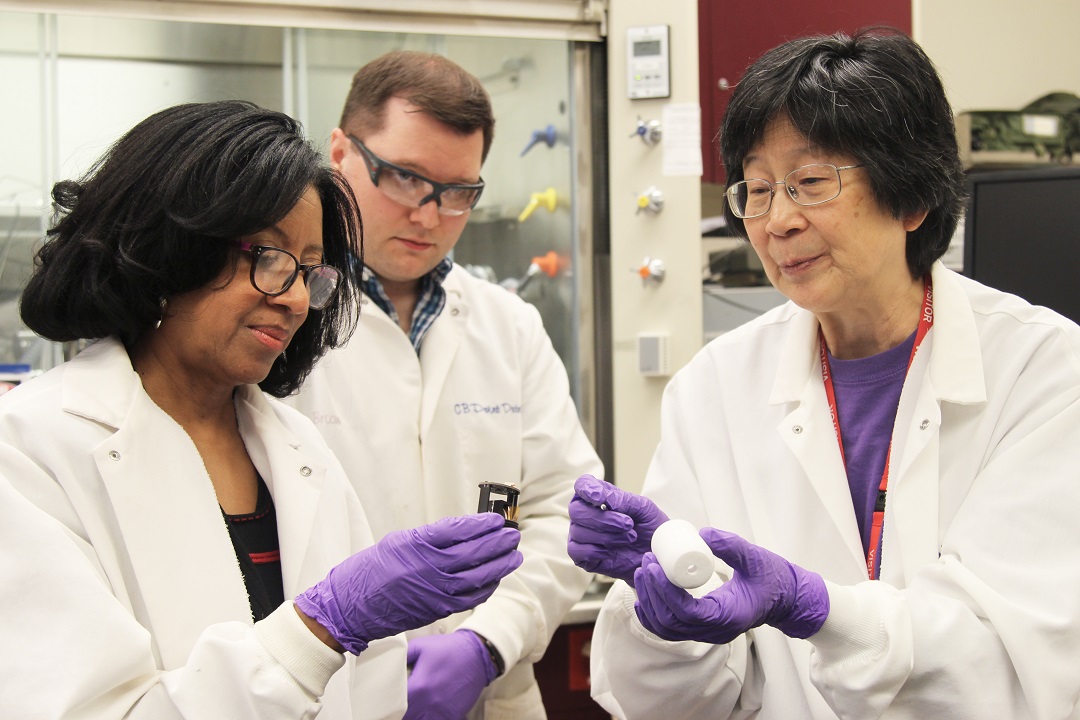
The U.S. Army’s Combat Capabilities Development Command Chemical Biological Center (DEVCOM CBC) is seeking to develop sensors that are light in weight, low in cost, small in size, and easy for warfighters to carry. The researchers envision being able to communicate with soldiers and their equipment through a universal interface, which would allow users to select and customize capabilities for each unique mission.
“We’re always trying to unburden the warfighter. We want to develop sensors that can be deployed to provide personnel with greater situational awareness of their field environment,” said Army Senior Research Scientist for Chemistry, Dr. Patricia McDaniel.
Researchers at the Center are also seeking ways to transport these microsensors into an area on ground vehicles or unmanned aircraft systems. For example, the sensor could be deployed by an aerial drone or mounted on a ground vehicle to provide situational awareness – such as hazardous contamination – of a given area
“Whether it is a ground vehicle or an unmanned aerial vehicle release, the autonomous deployment element of this is a key component of the effort,” BioSciences Division Chief Dr. Nicole Rosenzweig said.
The Center is collaborating to develop the microsensors with the objective to integrate science, technology, modeling, engineering, and novel manufacturing processes – including additive manufacturing. The Center’s next steps in developing the micro-sensor capability involve finding additional partners – such as small businesses and universities – who can help propel the research effort by providing miniaturized chemical detection, novel engineering solutions, and low-cost manufacturing methodologies.
“We’re trying to pull all of these research elements together to achieve the next generation of chemical or biological detection,” McDaniel said. “Microsensors is not a singular effort. It’s a spiral effort. The whole idea is to set up the infrastructure so that as we see technologies emerging, we can integrate them into the chemical biological detection world. We have the ability to assess, understand and implement them into something truly innovative.”
